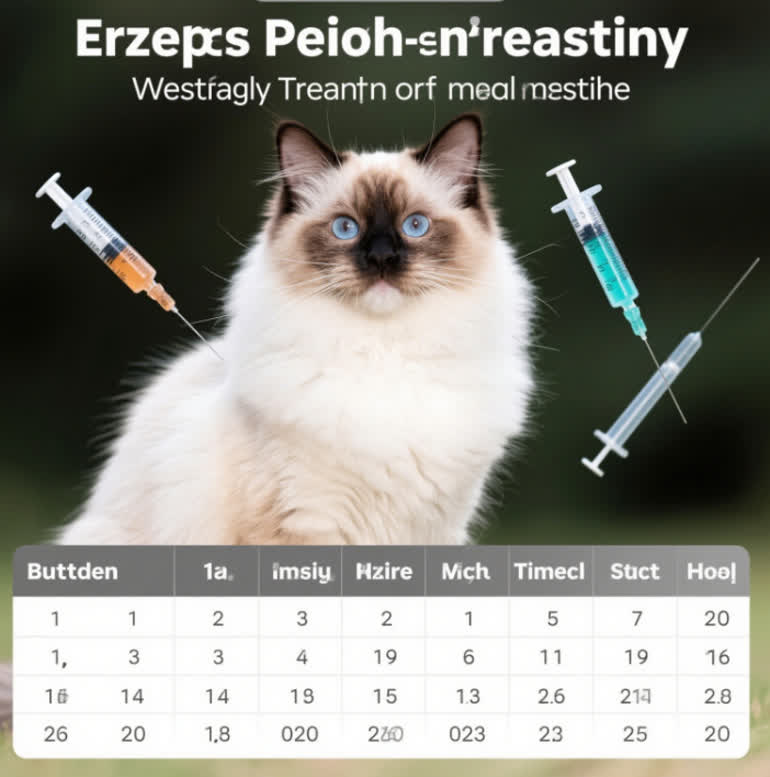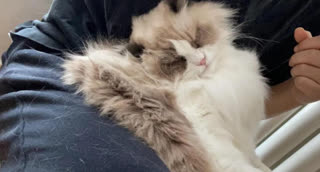Understanding Core and Non-Core Vaccines
Core Vaccines for Ragdoll Cats
FVRCP (Feline Viral Rhinotracheitis, Calicivirus, Panleukopenia):
Kittens: Start at 8 weeks, with boosters every 3–4 weeks until 16 weeks .
Adults: Annual boosters for the first year, then every 3 years .
Rabies:
Kittens: Administered at 12–16 weeks, followed by a booster 1 year later .
Adults: Required by law in most U.S. states, with boosters every 1–3 years depending on the vaccine type .
Non-Core Vaccines
FeLV (Feline Leukemia Virus): Recommended for kittens and outdoor cats, given in two doses 3–4 weeks apart .
FIP (Feline Infectious Peritonitis): Controversial due to limited efficacy; consult your vet if your Ragdoll is at high risk .
Ragdoll Cat Vaccination Schedule by Age Chart
Kittens (0–6 Months)
6–8 Weeks: First FVRCP dose .
10–12 Weeks: Second FVRCP dose + FeLV (if recommended) .
14–16 Weeks: Third FVRCP dose + Rabies .
4–6 Months: Spay/neuter surgery (if applicable) and discuss booster timing .
Adolescents (6 Months–2 Years)
1 Year: Rabies booster + FVRCP booster .
FeLV Boosters: Annual doses if your Ragdoll spends time outdoors .
Adults (2–7 Years)
Annual Checkups: Include FVRCP and Rabies boosters (if required) .
Non-Core Vaccines: Reevaluate FeLV or Bordetella based on lifestyle .
Seniors (7+ Years)
Bi-Annual Checkups: Monitor for age-related health issues like kidney disease or arthritis .
Vaccine Adjustments: Discuss with your vet whether to reduce booster frequency or focus on preventive care .
Key Considerations for Ragdoll Owners
- Lifestyle and Environment:
Indoor Cats: Prioritize core vaccines, but FeLV may still be necessary if exposed to outdoor cats .
Outdoor Cats: Require annual FeLV and FIV testing, plus non-core vaccines like Bordetella .
- Vaccine Safety:
Side Effects: Mild reactions like swelling or lethargy are common but resolve within 24 hours .
Severe Reactions: Seek immediate care for vomiting, difficulty breathing, or prolonged lethargy .
- Regional Variations:
Rabies laws vary by state; check local regulations to ensure compliance .
Non-core vaccines like Lyme disease may be recommended in tick-prone areas .
Creating a Personalized Plan
Consult Your Veterinarian: Tailor the Ragdoll cat vaccination schedule by age chart to your cat’s health history and environment .
Track Vaccinations: Use a logbook or app to record dates and boosters .
Titer Testing: For adult cats, discuss antibody titer tests to determine if boosters are needed .
FAQs
A: No. Kittens are highly vulnerable to diseases like panleukopenia, so early vaccinations are critical .
A: While individual sensitivity varies, Ragdolls generally tolerate vaccines well. Monitor for unusual symptoms .
A: Yes, as rabies can be transmitted by wildlife like bats, even indoors .










